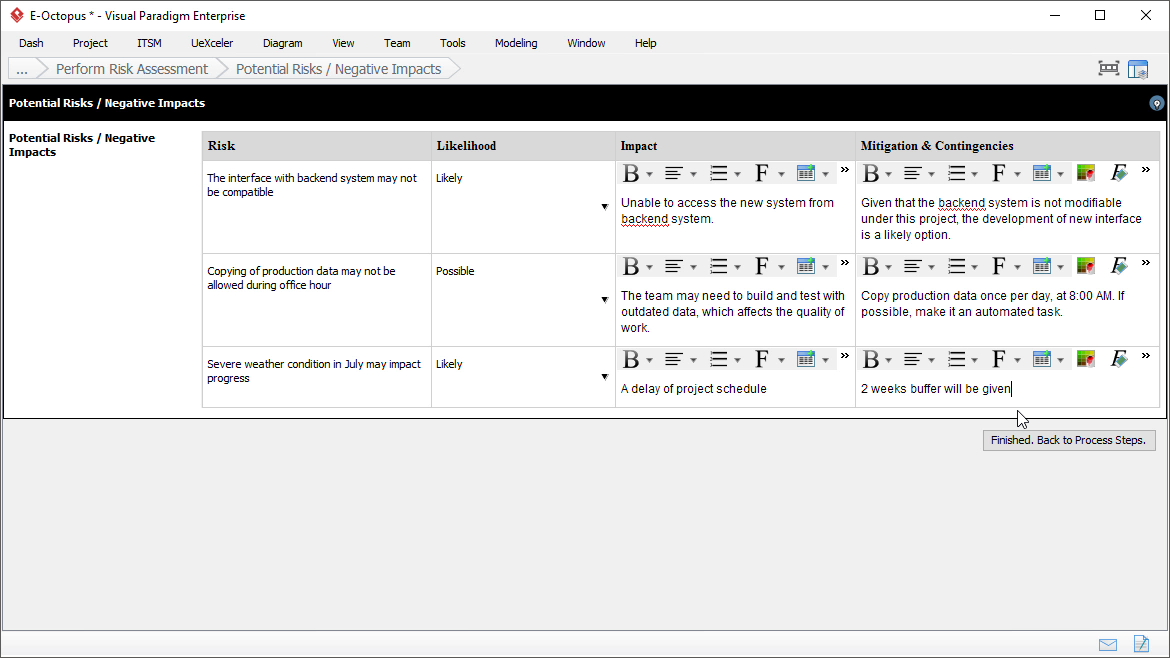Risk Assessment is one of the project management document you can create with our project management lifecycle tool.
Projects always carry risk, i.e. uncertainty. The purpose of risk assessment is to judge the benefits of the proposed project to be worth the risks involved in undertaking it. Risk Assessment involves assessing the risks associated with the project. A project with high risk may imply a higher chance that it will end with a failure, which is a factor to consider in approving the project proposal.
This article will walk you through the activities involved in risk assessment.
Activity 1: Perform Risk Assessment
List the potential risks and negative impacts
Identify risks to which the project will be exposed. Assess likelihood of each risk occurring and its impact on the project. Outline a plan for managing the risks. Include measures to reduce risk and possible contingency plans for limiting damage and recovery.

Describe the security considerations
Provide a brief summary of the impacts and/or concerns related to IT Security, such as passing information between systems, authentication, etc. If appropriate, specify the security evaluations needed system purchase or development, in complying with IT security standards.